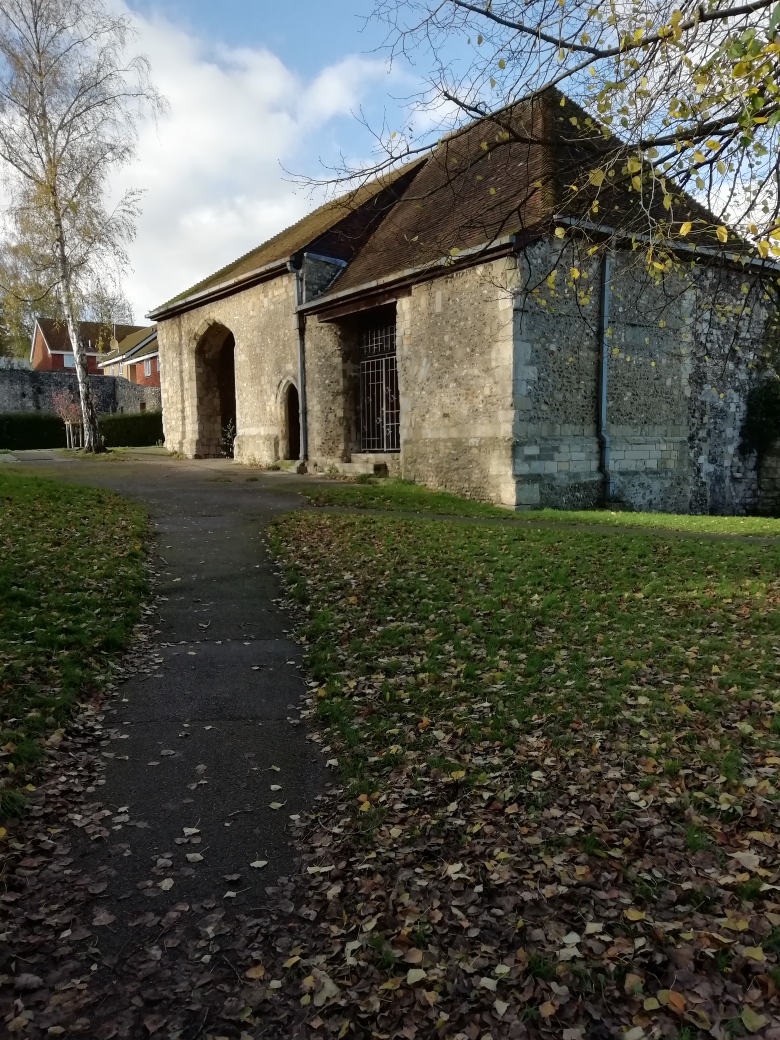Winchester 878 is about to open: it will be an immersive experience of the capital of England in the time of Alfred. We will visit next time we go to Winchester. Meanwhile we had a good look at a ‘trailer’, the artefacts in the City Museum that may appear virtually in the new exhibition. We also thought about the locals of King Alfred Terrace, built over what was the refectory of Hyde Abbey, where Alfred’s remains are said to have been buried after removal from the Old Minster. They have joined a community archaeological project and have so far found numerous objects without anything as tantalising as a grave.
The museum has a splendid model of Winchester in the nineteenth century, with audio commentary on various significant locations. There are three floors of exhibits; the first floor has Anglo-Saxon and medieval; the second has Roman. All are displayed for maximum interaction.
A coin of Alfred’s reign is perhaps the smallest of the pre-Conquest items, with a miniature carved head close in size. There are the expected weapons and grave goods, with jewellery and clothes fastenings. Glass cabinets allow close examination although rendering photographs through reflections. Explanations are very helpful. The immersive exhibition will be challenged to sustain the same level of connection with visitors.
Finds from all over Winchester as well as the neighbouring settlements show how well settled the area was. It was well chosen as the early capital, and of course William of Normandy felt a need to legitimise his status by having a coronation there as well as at Westminster. Alfred had no such need. Winchester was good enough for him, and even when his son became ruler of all England the capital remained as it had always been.
Having visited the museum it seemed only right to go the what remains of Hyde Abbey. The one building is the former gatehouse. Just beyond is a church built with some of the stones of the abbey and in the area it once occupied is evidence of stone walls and the streams that were used as natural drains for domestic purposes. A comprehensive historical poster is displayed inside the gatehouse to complement the museum and of course the 878 experience to come.












